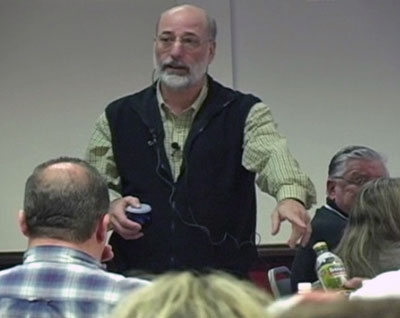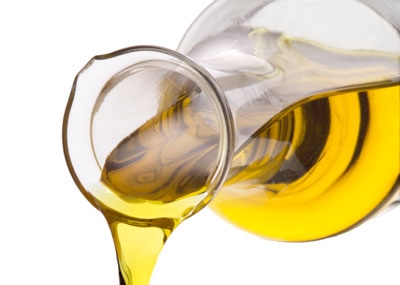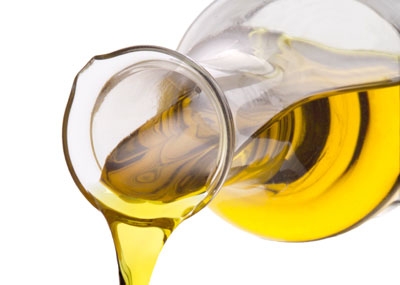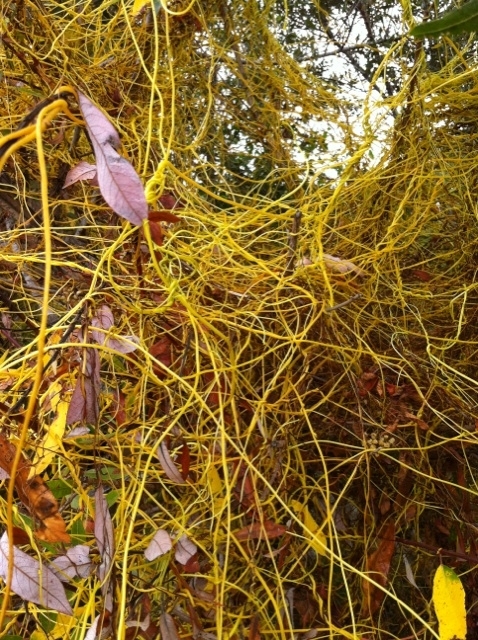Posts Tagged: olive
Florida citrus growers explore olive opportunities
Citrus growers in Florida, who are struggling with the devastating citrus disease huanglongbing, are considering growing olives, according to a report on the Tampa, Fla., ABC news affiliate.
Reporter Ryan Raiche covered a meeting at the University of Florida Citrus Research and Extension Center where UC Cooperative Extension farm advisor Paul Vossen introduced growers to olive production and marketing and offered citrus growers the opportunity to taste a variety of olives and olive oils.
“This is not a slam dunk, because this is a really peculiar crop that needs really specific things in order to flower and fruit,” Vossen said.
Olives thrive in a dry climate where it’s not too hot and not too cold. Vossen said rain during bloom season could wipe out the crop.
Ojai man appointed to Regional Water Quality Control Board
Ventura County Star
Gov. Jerry Brown has appointed Ventura County UC Cooperative Extension director emeritus Larry Yee to the Los Angeles Regional Water Quality Control Board.
The board oversees water quality issues and has the power to fine polluters.
Yee worked for the UC Cooperative Extension from 1975 to 2008 and was the Ventura County director from 1986 to 2008. He also was director of the UC Hansen Trust, which was set up to promote agricultural research and education.
LA area olive farm produces oil for local markets
In the last two decades, artisanal olive oil production in California has surged as consumers have developed an appreciation for the freshness, high quality and distinctive flavors that good locally produced oil can provide, reported food writer David Karp in the Los Angeles Times.
The story focused on Joyce Lukon, who bought a lot with a view of Topanga Canyon as an investment and tried to make it more attractive for resale by planting grapes and olives. She took classes in the sensory analysis of olive oil taught at UC Davis by Paul Vossen, a Sonoma County farm advisor who has been a prime inspiration of the California artisanal olive oil boom, and he later visited several times to advise her.
Lukon now sells her 375-milliliter bottles of olive oil for $25 each at two farmers markets and online.
Debate over groundwater heats up
Tim Hearden, Capital Press
What to do about declining groundwater supplies was the subject tackled by 100 farmers, environmentalists and government officials during an all-day workshop offered by the University of California Cooperative Extension.
"We need to pay attention, we need to be educated and we need folks to talk to their local leaders and help them understand ... both sides of the issue," said Tehama County supervisor Bob Williams, who is an oat and alfalfa hay producer.
Midyear cuts will spare ag programs
Tim Hearden, Capital Press
The $1 billion in midyear state budget cuts announced by Gov. Jerry Brown won't directly affect agencies that assist farmers and ranchers.
The University of California system will use reserves to absorb its sudden $100 million hit, meaning local Cooperative Extension offices will be able to maintain their services, said Dianne Klein, a media specialist on the UC Office of the President communications staff.
"What the university intends to do, on a short-term basis, is draw upon reserves currently held to pay for unexpected cost in employee health and welfare plans," Klein said in an e-mail. "This, in essence, is a rainy day fund. We've declared a rainy day."
There may be other measures to cover the $100 million loss, but using the health plan fund "represents the lion's share of the cost," she said.
California olive oil trade rivals Europe
California producers have mounted a major effort to bring back the domestic olive oil industry, planting thousands of acres, building mills and producing oils that are fresher, purer and cheaper than all but the finest imports, said a New York Times News Service article by Julia Moskin.
In fact, the article noted, a recent study by the Olive Center at UC Davis found that 69 percent of imported extra-virgin olive oils bought off the shelves of California supermarkets failed to meet international standards. European producers, however, said that testing supermarket products proves nothing about the relative quality of imported and domestic oils.
“You can’t decide that all imported oils are suspect and dismiss thousands of years of craftsmanship,” scoffed an American expert who farms olives in Tuscany. Critics also question the cultivation and production methods used in California.
UC Cooperative Extension olive oil expert Paul Vossen, who has worked with virtually every olive grower in the state, called that idea “a bunch of baloney.” He said high-density planting currently works only with certain varieties — arbequina and arbosana from Spain, and koroneiki from Greece — but for those, the practice is no different from other kinds of farming.
Early rain complicates walnut harvest
Tim Hearden, Capital Press
Nearly a week's worth of early-season rain in Northern California brought the normally robust harvest of middle and late walnut varieties to a stop. More than half the state's estimated 485,000-ton walnut crop consists of later varieties, many of which got caught in the rain
With growers fearing they might be hit with unfavorable weather during their harvest, some applied etheryl to induce hull split early, said UC Cooperative Extension farm advisor Rick Buchner. Whether or not that was beneficial is "a matter of some debate."
"Some guys were happy to get the husk open because the nut is going to dry faster," he said. "Even if it's laying on the ground, it's drying. That could be an advantage."
Japanese dodder found in Santa Barbara County
Olive fruit fly back
Julie Johnson, Orland Press-Register
There are considerably more olive fruit flies this year than at this time last year, said Bill Krueger, UC Cooperative Extension farm advisor for Tehama and Glenn counties. "When it comes to the olive fruit fly we really don't understand everything we need to know, and this is just one example," he said.
Nonpareils' arrival marks start of big almond harvest
Tim Hearden, Capital Press
Nonpareil almonds have been coming out of the orchards in California, ushering in the harvest of what's expected to be a record 1.95 billion-pound almond crop this year. Hullers and shellers in the San Joaquin Valley got their first loads on Aug. 19. "I think all of our orchards look pretty good," said Rick Buchner, a University of California Cooperative Extension farm advisor. "It's a good crop, really clean."
Garden writer streams advice on toxic plants
In a 1,500-word stream of consciousness, Bakersfield Magazine gardening writer Lynn Pitts warned her readers about the dangers of certain "toxic plants."
Sprinkled among personal experiences, trivia and witticisms, Pitts presented the 10 most common toxic plants found in local gardens: Oleander, tomatoes, potatoes, rhubarb, delphinium, boxwood, pyracantha, fig, foxglove and castor bean.
Among her words of wisdom:
- Oleander cuttings shouldn't be disposed of in green waste cans.
- Almost everything on tomato and potato plants are poisonous, expect the tomato and potato.
- Rhubarb leaves are toxic.
- The leaves and sap of fig trees cause dermatitis.
- Foxglove is the source of the heart medicine digitalis.
- Nefarious people have concocted the poison “ricin” from castor bean.
UC Cooperative Extension enters the story in a tangent close to the end, when Pitts writes about a time a wind storm left she and a neighbor flush with fresh olives. Pitts says she called the local University of California Cooperative Extension office for information on home olive curing.
"It wasn’t difficult, but time consuming; changing the brine constantly, rinsing, re-brining over and over. After the last brining, we packed them with fresh herbs and olive oil into sterilized glass canning jars," Pitts wrote. "We thought we’d have plenty of jars to give away as gifts, but, honestly, we ate most of them ourselves!"
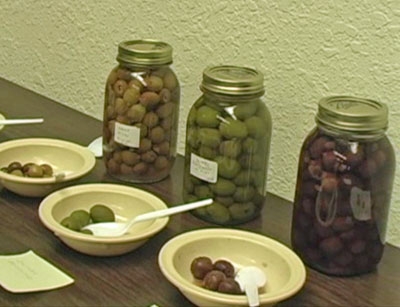
Garden writer steers readers to UCCE for olive curing advice.

